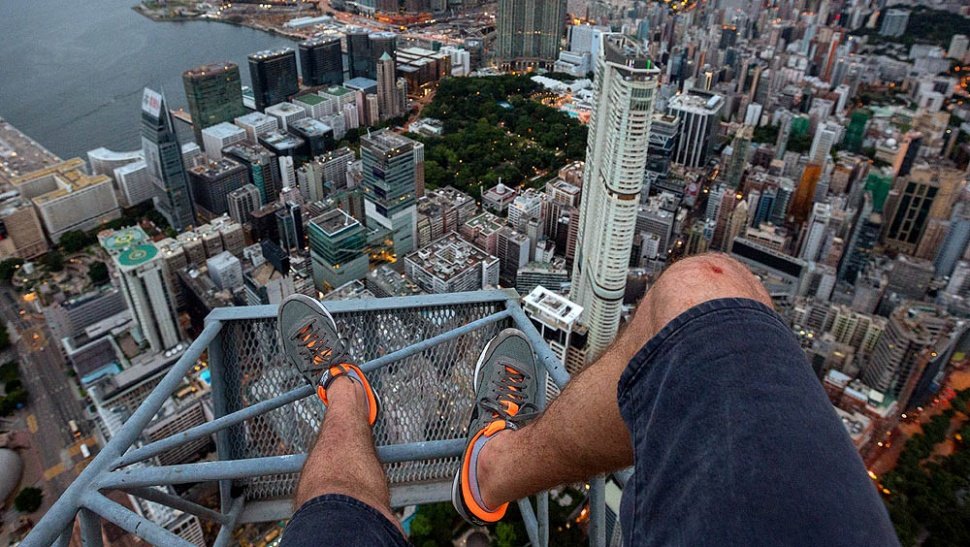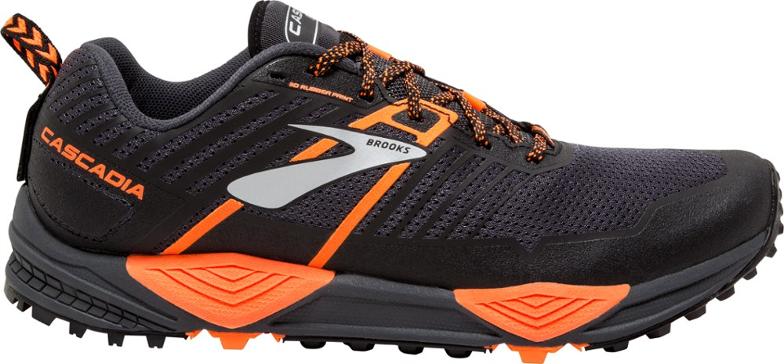When preparing for a backpacking trip, choosing footwear will be one of the most important gear decisions you’ll make.
Blisters, strained muscles, and scrunched toes can quickly ruin any backpacking trip, so this is an area where testing and experience go a long way.
We almost always backpack in lightweight trail runners on our spring, summer, and fall trips. They keep our feet nimble, don’t give us blisters, dry quickly, have excellent traction, and don’t exhaust our legs over long days of hiking. They also don’t require a break in period and last for 500-700 trail miles.
That said, footwear is a highly personal choice, so we recommend finding what will work best for you. Below we discuss the critical considerations for purchasing backpacking footwear and recommend our top choices for hiking shoes, and hiking boots.
Best Lightweight Trail Runners
We’ve hiked thousands of miles in trail running shoes over some of the toughest terrain on the planet. Trail runners are by far our top choice for almost every 3-season backpacking trip we take.
In addition, trail runners are also the most common footwear choice for thru-hikers tackling long distance trails like the AT, PCT, and CDT.
We feel that trail runners have the best balance between weight, durability, comfort, and breathability. They dry quickly when wet and are far less likely to give us blisters. In certain conditions, like heavy winter snow, we’ll opt for more substantial footwear, but trail runners are by far our top choice for hiking.
While we feel trail runners provide the best advantage and comfort for us, everybody’s feet are different. Below are our recommendations for the best lightweight trail runners, but later we’ll give some good options for hiking shoes and boots.
WEIGHT: 1 lb. 4 oz (pair)
We’ve been backpacking with Saucony Peregrines (men’s and women’s) for years and they’ve remained at the top of our list for trail runners.
We love their excellent traction, comfortable padding, roomy toe box, and soft sole. They [su_highlight background=”#f0ffb0″]dry quickly and are comfortable[/su_highlight] right out of the box.
The Peregrines are a well-rounded lightweight trail runner that will keep your feet happy on the trail all day long.
WEIGHT: 1 lb. 3 oz. (pair)
The Altra Lone Peak 4 (men’s and women’s) are incredibly popular trail runners in the thru hiking community and with good reason. They’re lightweight, comfortable, and feature a very roomy “foot shaped” toe box.
The Lone Peaks have a cushy sole, dry quickly, and have [su_highlight background=”#f0ffb0″]great traction for rugged mountain terrain[/su_highlight]. Altras are built with a zero-drop build, meaning the heel and ball of your foot will be the same distance from the ground (more on this above).
Altras have a unique look and fit due to their wide toe box, but as far as functionality goes, they’re at the top of the list for trail runners.
WEIGHT: 1 lb. 8 oz. (pair)
The Brooks Cascadia 13 (men’s and women’s) trail runners are quite popular in the backpacking community. They [su_highlight background=”#f0ffb0″]have a comfortable sole and a more durable upper mesh section[/su_highlight], so you’ll be able to clock more miles in them.
They’re a bit heavier than the shoes we prefer to hike in, but they’re still within reason. The traction is adequately grippy and they feel comfortable on the foot straight out of the box.
The Cascadia 13’s do have a more narrow fit than others, such as the Peregrines or Altras. One area where the Brooks Cascadia 13’s really shine is in their durability. Our biggest gripe is that they [su_highlight background=”#ffeee3″]don’t dry quite as quickly[/su_highlight] as some other footwear on this list.
WEIGHT: 1 lb. 5 oz. (pair)
The La Sportiva Bushido (men’s and women’s) has been a staple in the trail running community for a long time. They have awesome traction, feel very stable on rough terrain, and offer a toughness and durability that may be lacking in other trail running shoes.
Our biggest issue with the Bushido’s is that we find their [su_highlight background=”#ffeee3″]soles to be a bit stiff[/su_highlight]. This makes them a great choice for those wanting [su_highlight background=”#f0ffb0″]more protection under foot[/su_highlight], but we find them to be a bit less comfortable until they’re well broken in.
Best Lightweight Hiking Shoes
For those who aren’t quite sold on wearing trail runners on backpacking trips, but don’t want to carry the weight of hiking boots with every step, may find a hiking shoe to be a good middle ground. In general, hiking shoes have a tougher, more durable construction than trail runners.
With less unsupported mesh and often made with a leather and mesh combo, they’ll generally last longer. Because their soles tend to compress less, you will almost always notice a more rigid and stiff sole with hiking shoes when compared to trail runners.
This can be a good thing if you don’t want to feel the rocks under your feet, but will also mean less comfort and could mean more blisters.
Depending on the model you choose, many hiking shoes are built to be more water resistant. As we mentioned above, this may also mean they take longer to dry on multi-day trips.
Below we recommend our favorite hiking shoes that balance weight, comfort, and functionality.
WEIGHT: 1 lb. 10 oz. (pair)
The Salomon X Ultra 3 Low (men’s and women’s) is a burly trail ready shoe with a comfortable fit, awesome traction, and [su_highlight background=”#f0ffb0″]more durability than their trail runner counterparts[/su_highlight].
The Ultra 3’s come with their signature one-pull quick lacing system, which can take some getting used to – people either love it or hate it.
We’ve found that these shoes to need a bit more time to break in compared to others. Also, [su_highlight background=”#ffeee3″]the toe box is more narrow[/su_highlight], so those requiring a wider fit may want to look elsewhere. Salomon does offer this shoe in a waterproof gore-tex model.
Though heavier than what we usually wear on the trail, what you get in the Salmon X Ultra 3’s is a burly, durable, and well-built hiking shoe. If you want more ankle support, they also offer this shoe in a mid height model.
WEIGHT: 1 lb. 15 oz. (pair)
If you’re not quite sold on hiking in trail runners and want the durability of a hiking shoe, we recommend checking out the Merrell Moab 2 Vent Low (men’s and women’s).
Merrell has really nailed comfort with this shoe. It fit our feet well straight out of the box and its [su_highlight background=”#f0ffb0″]more protection under foot[/su_highlight].
The combination of suede leather and mesh allows your foot to breathe fairly well but adds durability and protection.
The Moab 2’s have Vibram soles which offer decent traction, though we felt some of our trail runners outperformed the Moab 2 in this area. For a couple more ounces, Merrell also offers this shoe in a waterproof version.
WEIGHT: 1 lb. 15 oz. (pair)
The North Face Ultra 110 GTX hiking shoe offers trail-ready comfort right out of the box.
They are lined with waterproof and breathable Gore-Tex, which make them a good choice for wet and muddy day hikes.
The combination of leather and tight mesh make [su_highlight background=”#f0ffb0″]this shoe a more durable option [/su_highlight]than the trail runners listed above.
The Ultra 110 shoe has a solid and varied lug pattern, offering great traction on varying terrain. [su_highlight background=”#ffeee3″]The soles of these shoes are stiffer[/su_highlight] than some others.
They offer great protection, but can take a bit longer to break in.
Best Lightweight Hiking Boots
Though many backpackers have transitioned to trail runners or hiking shoes in the last few years, there is still a strong section of the backpacking world that prefer the durability, protection, and ankle support of boots.
One of the only situations we use hiking boots is for winter conditions when snow is present and temperatures are cold. We also may use them on extremely slippery or unstable ground, like a rocky ocean shoreline.
Keeping weight down with hiking boots is still very important. Hiking boots have gotten a lot lighter over the years so if you’re the type of person that needs the additional ankle support, below are some good options to keep weight down.
Merrell Moab 2 Mid Ventilator
WEIGHT: 2 lb. 2 oz. (pair)
The Moab 2 Mid Ventilator (men’s and women’s) is one of the most popular hiking boots, and for good reason. They’re relatively lightweight for a hiking boot, affordable, and durable.
Like many Merrell products, these are comfortable right out of the box. Made with a combination of suede leather and breathable mesh, [su_highlight background=”#f0ffb0″]this boot will last for years[/su_highlight] of trail pounding.
They also offer the Moab 2 Mid in a waterproof version, however we still prefer the increased breathability offered in the Ventilators. If you generally require a roomier toe box, Merrell offers the Moab 2 boot in a wide model.
WEIGHT: 2 lb. 13 oz. (pair)
The time-tested Salomon Quest 4D 3 GTX (men’s and women’s) hiking boot has the burliness of a go-anywhere hiking boot with the chassis of a running shoe, making it a stable yet comfortable fit.
We’d hardly call footwear nearing 3 lbs lightweight – nor would we take this out on a 3-season backpacking trip – but for a hiking boot that you can take on a [su_highlight background=”#f0ffb0″]winter backpacking trip or off trail across technical terrain[/su_highlight], the Quest 4D 3 GTX boots are a great option.
In the new iteration of this popular boot, they’ve made the lug pattern even more aggressive for outstanding traction. The gore-tex lining will help keep your feet dry in wet or muddy conditions, however like all waterproofing, it will break down over time and this shoe takes [su_highlight background=”#ffeee3″] a long time to dry when wet.[/su_highlight]
If you’re looking to shed some ounces and don’t need the high ankle support, Salmon also offers the Salmon Quest 4D 3 Mid GTX.
WEIGHT: 2 lb. 7 oz. (pair)
The Lowa Renegade GTX Mid (men’s and women’s) is a widely popular boot that offers great stability and protection for a mid height boot.
For this level of support, the upper collar still feels comfortable and cushy.
The gore-tex liner kept our feet dry on day hikes, through water soaked into the leather [su_highlight background=”#ffeee3″]making them feel heavier[/su_highlight] than we’d like.
Like most hiking boots, we’d take these out on rainy day hikes with moderate loads, but would be hard pressed to take the Renegades out on a multi-day backpacking trips (we prefer trail runners in those circumstances).
Lowa offers the Renegade GTX Mid in regular, narrow, and wide options, [su_highlight background=”#f0ffb0″]making them highly customizable.[/su_highlight]
CRITICAL FOOTWEAR CONSIDERATIONS
COMFORT AND FIT – This is the most important consideration when choosing hiking footwear. Different people need different things in shoes (wide vs. narrow, arch support, heel-to-toe drop, etc), so finding what makes your feet happy is critical. If your shoes don’t fit your feet, you’ll have pain with every step and your hiking trip will quickly become a bust.
WEIGHT – Weight is a surprisingly important consideration for footwear, and one of the reasons we prefer lightweight trail runners over heavy backpacking boots. Weight carried on your feet zaps 4-6 times more energy than weight carried on your back. So swapping a 3-pound pair of boots for a 1-pound pair of running shoes is the energy saving equivalent of removing 8-12 pounds from your backpack.
Needless to say, that’s a really big deal. Also, nimble feet lead to less muscle fatigue, less stumbling, and over time can help avoid knee and hip flexor problems.
PRICE – We tend to be willing to spend a bit more for quality footwear because it’s tied so directly to the enjoyment of our hiking trips. Comfort and fit usually trump cost in our books, but we recommend a variety of quality options in our top picks below.
SIZING – Feet tend to swell over long days on the trail, so it’s almost always a good idea to buy footwear at least a half size larger than your normal shoes.
TESTING – You’re going to take thousands of steps on any backpacking trip, so you really need to know that your footwear will fit comfortably and won’t cause blisters. We recommend, at very least, buying your footwear a few weeks before any hiking trip and spending as much time in them as you can, making sure they work for your feet.
TRACTION – Traction is one the most important parts of quality backpacking footwear. Picture yourself hiking along a narrow ledge with shifting gravel beneath your feet. Knowing that your footwear will hold and keep you from slipping is crucial, especially over washed out or exposed sections of trail. We heavily factored quality traction into all of our footwear recommendations below.
WATERPROOFING – If you’re hiking for multiple days in wet conditions, your feet are going to get wet no matter what type of footwear you’re wearing. That’s just how it goes. Moisture in the air will make it hard for anything to stay dry. Rain will drip down your legs and seep into your shoes. Sweat and condensation will build inside your footwear soaking your shoes from the inside out.
And even if you could mitigate those other factors, “waterproof” footwear will develop small holes and tears over time which allow water to seep in.
In addition, when “waterproof” footwear gets wet, it tends to be very heavy and take a long time to dry. For those reasons, we almost always backpack in non-waterproof, quick dry, lightweight trail runners during our spring, summer, and fall backpacking trips. If it’s going to be a rainy trip or we plan to cross a moderate amount of snow, we bring heavy wool socks to keep our feet warm while we hike in wet shoes.
At night we clean our feet, air them out, and keep them warm in dry camp socks.
BREATHABILITY – This is another critical consideration when choosing footwear and one of the principle reasons we hike in trail runners. Your feet are going to sweat a lot when you hike, especially on warm days. If that moisture doesn’t have an easy way to escape, it will make the skin on your feet soft and prone to blisters. Shoes that are highly breathable are generally not waterproof and will get wet quickly when it rains. But, they also dry quickly too.
DURABILITY – One downside to trail runners is that they tend to be less durable than hiking shoes or boots. Generally speaking, trail runners last around 500 miles, hiking shoes around 750 miles, and hiking boots around 1000 miles.
If you value footwear that will last for many years, you may prefer a hiking shoe or boot that will live longer trail runners, just make sure you understand the downsides associated with that choice too.
Also, when choosing a trail runner or hiking shoe, try to avoid large sections of unsupported mesh, which can wear out quickly.
ANKLE SUPPORT – Ankle support is one of the most widely contested topics among backpackers when discussing footwear.
This is a highly personal choice and we have our own opinions on the matter. In general, we feel claims of ankle support in hiking footwear are wildly exaggerated. In order to get true ankle support, you need high top footwear laced tightly around your ankles, which most boot wearers don’t actually do.
In our opinion, most people in athletic condition with healthy ankles carrying light to moderate loads don’t really need additional ankle support for backpacking.
SOLES – We look for trail running shoes with relatively thick and well-cushioned soles so we don’t feel every rock under our feet. Trail runners also tend to have more flexible soles, which can help prevent blisters. Alternatively, hiking shoes and boots tend to have more rigid soles, which will last longer and feel stiffer under the feet.
HEEL-TO-TOE DROP – Traditional shoes usually have a noticeable drop in height from their heel to toe with the idea that it increases your running efficiency. Some trail runners have “zero drop,” meaning your foot is the same distance off the ground from heel to toe. Proponents of zero drop claim that it puts less stress on your body and more closely emulates a natural running style.












